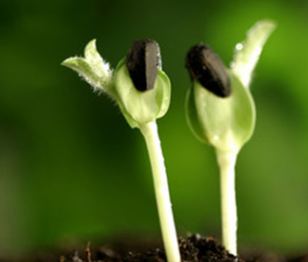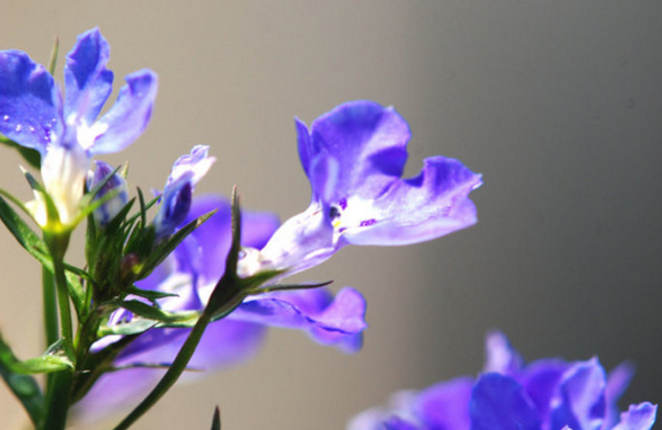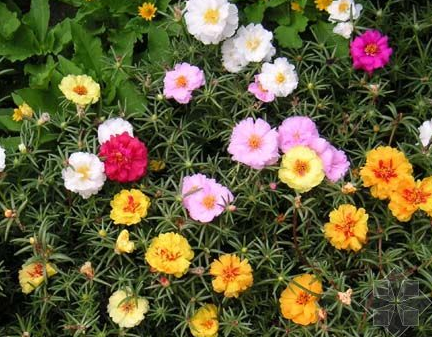How to plant forget-me-not seeds, how to shape and prune
Forget me not only beautiful colors, meaning good, deeply loved by people, do not forget the deep feelings of forget me. Then plant the seeds of forget-me-not in the family, and what kind of results will be harvested? Follow the footsteps of Xiaobian to see how the seeds of forget-me-not are planted.

How to grow forget-me-not seeds
1. Do not forget to sow seeds
Sowing is generally planted from September to January of the following year. The seeds are light-repellent. After sowing, they should be slightly covered with soil and kept humid. Germination takes 10~15 days at 15- 20℃. Sowing should pay attention to the temperature should not exceed 25℃, germination after the need for ventilation, seedlings with more than 5 true leaves when planting. Tissue culture technology culture in the seedling pot tissue culture seedlings, to 4~6 leaves when planting.
Do not forget that I like dry, fertile, breathable, slightly alkaline sandy loam. Therefore, when planting, you can mix the decomposed organic fertilizer and slow compound fertilizer evenly in the soil. The distance between each forget-me-not plant is 3~4 cm, and the planting depth is slightly higher than the root neck. After planting, control the temperature below 15℃ for 2 months to ensure that the plants pass the vernalization stage, which is beneficial to the normal flowering of forget-me-not.
2. Do not forget the light requirements
Do not forget that I like plenty of sunshine, but the ambient temperature should not be too high or humid, so in the usual maintenance process should be given enough sunshine, insufficient light will lead to forget me luxuriant leaves, will affect flowering. However, in summer, try to take shade measures to avoid exposure.
3. Do not forget the temperature requirements
The optimum temperature for the growth of forget-me-not is 22-28℃. When the temperature is higher than 30℃ or lower than 5℃, the growth of forget-me-not will be hindered. Therefore, when planting forget-me-not, try to carry out low temperature treatment first, let it fully accept low temperature, complete vernalization, normal growth, try to control the temperature within the appropriate range.
4. Do not forget the watering method
The forget-me-nots you usually see are cut flowers that look dry, so some people think that forget-me-nots grow in dry environments, and you are wrong. Forget-me-not is more like water, but afraid of waterlogging. During the maintenance period, keep the soil of forget-me-not slightly damp, but the root position should not accumulate water. When the sun is sufficient, you can irrigate more water appropriately to increase the air humidity. Non-growing season can ensure that the basin soil slightly dry tide.
5, do not forget the fertilization method
When planting forget-me-not, apply enough base fertilizer and mix the fertilizer evenly into the soil. When the forget-me-not leaves grow 6~8 pieces, urea solution can be added once. When forget-me-not flowers sprout, 0.1% potassium dihydrogen phosphate solution can be applied 2-3 times.
Forget-Me-Not How to Shape and Trim
1. Do not forget the flowers fixed
When cultivating forget-me-not, in order to survive a good cut flower, it is necessary to fix the flowers, usually pulling nets to fix them.
A net frame can be set up before the forget-me-not plants bolting. The net frame can be set up at a place 20cm away from the ground. After the plants grow flowers, the second layer of net frame can be set up to fix the flowers in time with the growth of forget-me-not flowers.
2. Forget-me-not shaping and pruning
During the growth of forget-me-not, it needs to be trimmed in time.
The new forget-me-not flowers can be treated according to the size of the plant. Larger plants can retain 4- 5 branches per plant for further growth and flowering. The growth of relatively small forget-me-not plants, you can cut off the flowering branches, so that it can temporarily not bloom, the plant can grow, and later the flowers will be good.
During this time, it is necessary to regularly prune the new thin branches, so that the consumption of nutrients can be reduced, and nutrients can be concentrated on the flowering branches. And this can also improve the forget-me-not plant ventilation and light conditions, reduce blind flowers. In addition, after flowering once, when the cut flowers have reached 50%, it is necessary to cultivate the next flowering shoots. In the forget-me-not growth period, keep a few new flowers, wait until the flowers have been cut, the flowers have grown to a suitable height, ready to bloom. In this way, forget-me-not can bloom continuously.
After pruning, forget-me-not flowers will certainly get better and better.
Breeding Methods and Pest Control Techniques of Forget-Me-Not
Forget-me-not flowers give people a romantic impression, it is not only beautiful flowers and romantic words, in daily life by young women like, the following is forget-me-not breeding methods and pest control skills, like parents hurry to collect yo.
I. Breeding methods
The propagation of forget-me-not mainly adopts two forms, namely seeding propagation and tissue culture.
1. seed reproduction
As long as the temperature is right, it can be carried out all year round. Because the optimum temperature for germination of seeds is 15~20℃, it can be sown in early spring when annual cultivation is carried out in cool summer areas, and more in autumn when annual cultivation is carried out in hot summer areas. Because of its low germination rate with shell, it needs to be kneaded before sowing, so that it can be threshed before sowing, which can improve the germination rate. When sowing, 4 parts of rotten leaf soil, 4 parts of garden soil and 2 parts of sandy soil shall be mixed evenly. Because the seeds are light repellent, it is advisable to cover the soil after sowing, so that the seeds cannot be seen in the soil. Under the condition of 15~20℃ and keeping enough humidity, it can germinate after 10~15 days. Attention should be paid to ventilation after germination. When seedlings grow more than 5 true leaves, they can be planted.
2. tissue culture
The explant of forget-me-not tissue culture includes tender inflorescence, sterile bud, etc. MS+2.0 mg /L BA+0.2 mg /L NAA was used for bud induction, and 1/2 MS+ 0.5 mg /L NAA was used for rooting. The suitable medium for transplanting plantlets was peat soil ∶ pearlite = 1∶1. When the plantlets have 4~6 leaves, they should be planted.
II. Cultivation techniques
1. culture substrate
Forget-me-not soil requirements are not high, porous sandy loam cultivation best. The amount of base fertilizer accounts for 70% of the total amount of fertilizer. Base fertilizer is generally compound fertilizer and decomposed organic fertilizer. Cultivation, leveling do ridge, ridge height of about 20 cm. Seedlings should not be planted too deep, planting depth to root and soil surface level is appropriate, after planting timely irrigation through water.
2. fertilizer and water management
When the seedlings survive and start to grow, topdressing is carried out every 10 days in combination with irrigation, and nitrogen fertilizer of 200 mg/L and potassium fertilizer mixed solution of 100 mg/L are supplemented in water for fertilization. The soil needs to be kept moist during the seedling period, and it is often necessary to intertill and weed to promote the healthy development of the root system of the seedling. About two months after planting, the seedlings began to sprout flowers. When entering the flowering period, water and fertilizer should be sufficient, otherwise the flowers will be short and the flowers will not flourish. The irrigation water can be supplemented with 200 mg/L nitrogen and potassium mixture, and the fertilizer is applied once every 10 days. It can improve the yield and quality of cut flowers.
3. temperature management
Forget-me-not likes cool environment, afraid of high temperature. The best temperature for cultivation is 12~20℃.
4. light regulation
Don't forget I love growing in the sun. If the environment is shaded, it will lead to less flowering scape. Therefore, to ensure full sunlight, growth is better. When there is insufficient light, supplementary light is needed.
5. Fixing, shaping and pruning flower branches
To produce high quality forget-me-not cut flowers, nets are usually drawn to fix the flowers. The concrete method is to pull a layer of net 20~ 30cm away from the ground before bolting, and to cover the second layer of net 45cm away from the ground after the plants grow flowers. As the flowers grow, and when the flowers into the grid, keep the scape upright.
Forget-me-not during the growth period of flowering flowers to be according to the size of seedlings to distinguish between treatment. For the plants that have grown larger and the leaves between the plants are basically sealed, 4~5 flower branches are reserved for each plant to grow and bloom; for the smaller plants, the flower branches can be removed to inhibit the flowers from blooming temporarily, so that the plants can fully grow, laying the foundation for producing high-quality cut flowers, and allowing the plants to enter the flowering period when the plants fully grow. During this period, the newly sprouted thin flowers should be regularly removed to concentrate nutrients for flowering flowers, improve ventilation and light transmission conditions inside the plant, reduce the number of blind flowers in the middle and lower parts of the plant, and improve the quality of single flowers. When the cut flowers amount exceeds 50%, the next flowering flowers should be cultured. The practice is to retain a small number of newly sprouted flowers during this period, and after the last crop is completely cut, the retained flowers have grown to a certain height, thus effectively shortening the time between two crops of flowers, so that the forget-me-not can continuously bloom and supply the market.
6. bingchong prevention
Forget-me-not diseases include gray mold, powdery mildew, virus disease, etc. Botrytis cinerea can be controlled by continuous spraying of 800~1000 chlorothalonil and thiophanate-methyl for 3~4 times. Powdery mildew can be controlled by spraying with fenxiuning, virus diseases are mainly controlled by pulling out diseased plants and burning them in time, spraying insecticides to prevent insect transmission, etc.
Scale insects are the most common pests of Tortoise, a small amount can be washed with an old toothbrush and sprayed with 40% omethoate EC 1000 times.
7. Cut flowers and listing
When the petals on each small flower are expanded to 30%, all inflorescences are colored, and they can be cut. When picking flowers in the morning or evening, cutting from the base of the plant, especially in the early stage of picking, should be cut at more than one large leaf of the flower branch, which can promote the germination of axillary buds. After cutting, immerse the base of flowering branch in fresh-keeping solution to keep flowering branch hydrated. Cut flowers of forget-me-not can be stored for 2~3 weeks at 2℃.
Forget-me-not is a common cut flower in the flower market, and it is very popular. It can be planted on a large scale and potted. Those who like flowers and plants can try to cultivate them themselves.
Podocarpus bonsai pictures and production, auspicious patron saint
Not only Podocarpus bonsai for viewing, Podocarpus wood or building, medicinal and carving good materials, so the value of Podocarpus is very high, which also directly led to the bad phenomenon of podocarpus theft, so we must protect each Podocarpus well, first from understanding Podocarpus start it.
- -------------
[Plant Archives]----------------------------------------------
Chinese name: Podocarpus
Podocarpus macrophyllus
Other names: Luohan fir, Evergreen Luohan fir, Tufir, Chinese fir, Xianbai, Luohan cypress, Jiangnan cypress
Family: Podocarpaceae
Podocarpus: Podocarpus
Distribution: Podocarpus is common in southern China, including Hong Kong.
Description: Evergreen tree, up to 18 m high, usually pruned to keep low, leaves alternate, arranged in spiral shape; flowering in early summer, also divided into male and female, male flowers cylindrical, 3-5 clustered in leaf axils, female flowers solitary in leaf axils; seed female larger than seed, mature red, plus green seeds, like bald monks wearing red robes, hence the name Podocarpus.
- -------------
▲ Upper basin: Podocarpus usually carries out upper basin before germination in spring, and the basin soil shall be slightly acidic sandy loam with loose texture and good drainage. Modeling: Podocarpus modeling more in the dormant period, commonly used techniques are shear, tie, pressure, bundle, hanging and so on. Among them, it is simple to cut, but difficult to tie, press, bundle and hang. Common forms are curved dry, inclined dry, lying cloud type, cliff type and root type. Branches and leaves can be pruned into flakes or steamed buns. In the modeling process, the sculptor must carry out artistic processing according to the natural beauty of Podocarpus itself, according to the tree system, the United States and the United States, so that the modeling is strong and distinct.
▲ Conservation: Podocarpus bonsai has lax requirements for conservation and management. In spring and autumn growing season, only 1-2 times of nitrogen-based topdressing can be applied. Podocarpus has been shaped bonsai, to prevent excessive growth of branches and leaves, pay attention to often in the growing season for topping and pruning. Podocarpus potted plants cultivated indoors should be maintained in ventilated places all year round, and cannot be kept indoors for a long time, otherwise they will lead to yellow leaves falling off or even death of Podocarpus. Summer should not be exposed to the sun, placed in a semi-shady place maintenance. Summer basin soil dry to timely watering, and watering enough to irrigate thoroughly; autumn and winter can be appropriately reduced. Winter when the temperature drops to 5℃, it should enter the house winter, and control the amount of watering, pot soil to dry some better.
- -------------
Because Luohan pine tree is quaint in shape, the combination of seed and seed handle is peculiar and lovable, and there are many plants in temples and houses in the south. Podocarpus bonsai placed indoors, there is a guardian auspicious, bless the longevity of feng shui role, known as the patron saint. In two villages in China, there are magical stories about the miracle of Podocarpus. Many old people believe that Podocarpus can bring good luck and bless peace.
"Conclusion: After seeing the Podocarpus bonsai pictures, everyone should have more knowledge and understanding of this simple and auspicious plant. If you like it, you may wish to make a Podocarpus bonsai to adjust your life."
[More Plant Encyclopedia]
Poppy, Evening Primrose, Azalea, Lavender, Asparagus, Douban, Hyacinth, Flamingo, Cherry Blossom, Posthouse Lotus.
African Jasmine Rose Spring Festival Flower Succulent Tropical Plant Tequila Flower Canna Flower Forget-Me-Not Dandelion
Dendrobium officinale Taxus kapok Osmanthus flower Begonia flower hydroponic plant home Feng Shui plant bedroom Feng Shui plant plum aloe
Jasmine radiation-proof plant copper flower potted plant bonsai production drug plant mistletoe indoor flowers fortune tree evergreen rich bamboo
Potted production Anthurium mint raw stone flower geranium garden crab claw orchid smooth sailing tiger orchid Kunlun snow chrysanthemum water lily blue enchantress
- Prev

How to pick out the heart in the method of six-fold family maintenance
Liubeili, also known as the butterfly flower, originated in South Africa and is now distributed in many provinces in China. It will blossom only in long sunshine and low temperature. Cold resistance is not strong, avoid extreme heat, like easy loam rich in humus. Six times the family maintenance method of light, six times the benefit can not bear the shade, must be in full light to grow normally.
- Next

How to raise Scutellaria barbata? why is it also called Han Xincao?
Scutellaria barbata is also called immortal, the flower is small, but it is very beautiful. When raising Scutellaria barbata, if you can blow it up, it must be very beautiful. Scutellaria barbata is a plant of Labiatae, which has the functions of clearing heat and detoxification, promoting blood circulation and removing blood stasis, reducing swelling and pain, anti-cancer and so on.
Related
- Fuxing push coffee new agricultural production and marketing class: lack of small-scale processing plants
- Jujube rice field leisure farm deep ploughing Yilan for five years to create a space for organic food and play
- Nongyu Farm-A trial of organic papaya for brave women with advanced technology
- Four points for attention in the prevention and control of diseases and insect pests of edible fungi
- How to add nutrient solution to Edible Fungi
- Is there any good way to control edible fungus mites?
- Open Inoculation Technology of Edible Fungi
- Is there any clever way to use fertilizer for edible fungus in winter?
- What agents are used to kill the pathogens of edible fungi in the mushroom shed?
- Rapid drying of Edible Fungi

